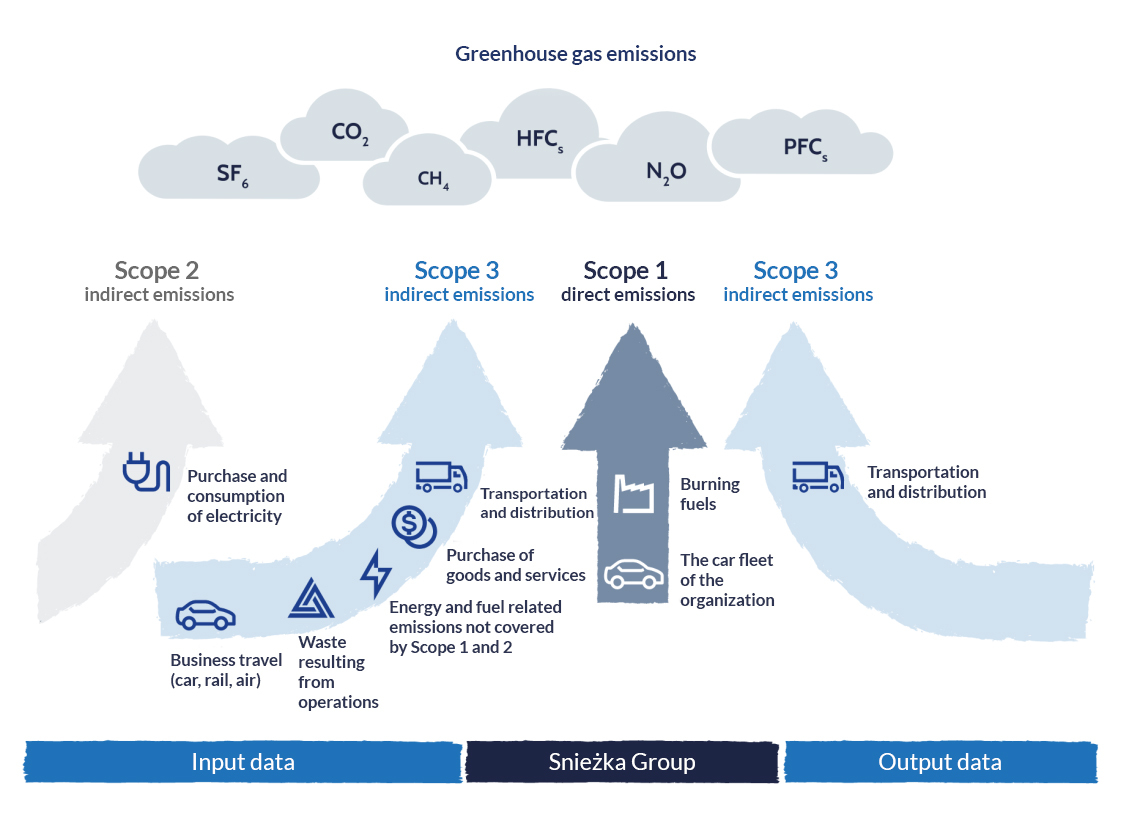Scope 1
Carbon footprint scope 1 includes direct emissions, taking into account the combustion of fuels and the use of refrigerants and other gases.

We take responsibility for our impact on the environment. Our approach is reflected in the "Śnieżka Capital Group Climate Policy", a key document that defines the approach to managing the climate impact of our activities along the entire value chain. It is also the foundation for the introduced Sustainable Development Strategy, where detailed objectives and measures in this area have been included, which are translated into the solutions we implement and the actions we take.
We place great emphasis on a detailed analysis of data that will allow us to determine actions related to long-term reduction goals. One of the core projects for us was to calculate the carbon footprint of our organization in all three scopes (scope 1, 2 and 3).
Calculation the carbon footprint is necessary to identify areas where we want to reduce emissions. We want to set ambitious but realistic targets for its reduction over the next few years. These goals will cover Scope 1 and 2, and later Scope 3, our supply chain.
The calculation of the carbon footprint was made in accordance with internationally recognized standards – The Greenhouse Gas Protocol “A Corporate Accounting and Reporting Standard Revised Edition”, GHG Protocol “Scope 2 Guidance”, Corporate Value Chain (Scope 3) Accounting and Reporting Standard. This allowed us to determine the size of our organization’s impact on the environment in terms of carbon dioxide emissions.
Scope 1
Carbon footprint scope 1 includes direct emissions, taking into account the combustion of fuels and the use of refrigerants and other gases.
Scope 2
Carbon footprint scope 2 includes indirect GHG emissions related to energy consumption.
Scope 3
Scope 3 emissions include raw material purchases, transportation and distribution, waste generation, business travel, and fuel-related emissions not covered by scopes 1 and 2.

The reduction of emissions occurred in all three scopes of the carbon footprint – it covered both indirect and direct emissions. The reduction of the total carbon footprint was caused by a reduction in the use of fuels, a decrease in the amount of purchased raw materials and the purchase of energy coming exclusively from renewable energy sources.
An increasing number of extreme weather events, long-term water deficits, increased emissions and pollution, as well as increased requirements introduced at European Union level, translate into the need to adapt our business model and implement new investment projects. All this to manage these risks and adapt to the climate changes as best as possible.
Increasing
energy efficiency
Transformation
towards green energy
Management and reduction of GHG emissions
based on calculation and reporting of all three GHG emission scopes
(scope 1, 2, 3)
